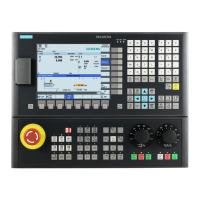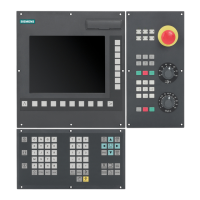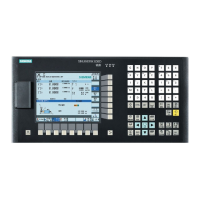K3: Compensations
4.4 Interpolatory compensation
Extended Functions
238 Function Manual, 03/2013, 6FC5397-1BP40-3BA1
Compensation value at reference point
The compensation table should be structured such that the compensation value at the
reference point is "zero".
4.4.2 Compensation of leadscrew errors and measuring system errors
4.4.2.1 Measuring system error compensation (MSEC)
Leadscrew and measuring system errors
The measuring principle of "indirect measurement" on NC-controlled machines is based on
the assumption that the lead of the ball screw is constant at any point within the traversing
range, so that the actual position of the axis can be derived from the position of the drive
spindle (ideal case). However, manufacturing tolerances result in dimensional deviations of
varying degrees of severity on spindles (so-called leadscrew errors).
Added to this are the dimensional deviations (differences in reference division) caused by
the measuring system as well as its mounting on the machine (so-called measuring system
errors), plus any machine-dependent error sources.
Compensation
With "measuring system error compensation" (referred to below as MSEC), the base and
compensation axes are always identical. It is therefore an axial compensation for which a
definition of the base axis and compensation axis in the compensation table is not
necessary.
Note
The leadscrew error compensation (LEC) is part of the measuring system error
compensation.
The principle of the MSEC is to modify the axis-specific position actual value by the assigned
compensation value in the interpolation cycle and to apply this value to the machine axis for
immediate traversal. A positive compensation value causes the corresponding machine axis
to move in the negative direction.
The magnitude of the compensation value is not limited and is not monitored. In order to
avoid impermissibly high velocities and accelerations caused by compensation, small
compensation values must be selected. Large compensation values can cause other axis
monitoring functions to output alarms (e.g. contour monitoring, speed setpoint limitation).
If the axis to be compensated has a 2nd position measuring system, a separate
compensation table must be created and activated for each measuring system. The correct
table is automatically used when switching between measuring systems.

